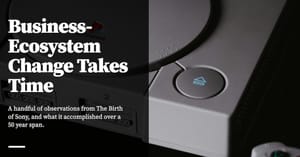Productivity momentum is a simple, obvious idea: tasks become easier to do once you’ve started on them. Anyone who has spent any amount of time consuming productivity porn would have heard of this; this is not a new invention by any means.
But there's something to be said about the usefulness of this idea compared to its simplicity. I’ve been abusing this technique a lot recently, to plough through some pretty terrible work — and it’s also been rather effective at keeping the pandemic news at bay.
Here are some notes from practice.
There are three particular variations of productivity momentum that I like. The first is from my friend Wai Chuan, who told me a couple months ago that he lists down, before bed, three tasks that he intends to accomplish the next day. This sounds rather silly, except that Wai Chuan is one of the most productive people I know. So I’ve given his habit a serious shot.
The trick that’s worked for me, I’ve found, is to use this planning time to mentally step through each task, even though I’m winding down for the day. (Cal Newport writes about something similar in Deep Work — though he uses it for something else entirely; he thinks it works because of the Zeigarnik effect). What I’m doing with this is to effectively trick my brain into thinking that I’ve already started. It’s weird but it works.
The second variation is from — well, God knows where it’s from. (The last person to remind me of this idea is Tiger, who reached out for a chat after reading this blog, and I’m quite grateful to him for it). The technique I’m talking about here is the incredibly common trick of leaving something unfinished before you end your work for the day. This means that you’ll wake up to a half-completed design, or a uncompilable function, or a dangling paragraph, and your work begins in medias res.
There’s a twist to this that I didn’t appreciate until recently. Productivity momentum only kicks in when you’re confident of success. Otherwise, the half-finished work just sits there and stares at you. I think the people who best capture this quirk is the team from Basecamp, when they say that ‘work is like a hill’:
Every piece of work has two phases. First there’s the uphill phase of figuring out what our approach is and what we’re going to do. Then, once we can see all the work involved, there’s the downhill phase of execution.
Leaving something unfinished works best when you’re executing downhill. The nuance, then, is to only use this trick when you’re sure of success.
(This is further anecdotal evidence in favour of the procrastination equation, because downhill work has a high expectancy for success. Who knew?)
The third variation of productivity momentum that I like comes from the observation that projects that have already been built out are easier to work on than projects that haven’t. I haven't had a great track record with this. Some people are good starters. I'm not; I'm much better at taking something that's already started and then running it to extreme growth.
I struggled with starting when it came to writing Keep Your People. And I'm struggling now with building momentum on an app I’m working on. My approach to this latter task is to build small, throwaway prototypes with reusable components in them. I’ve built two such prototypes in the past two months; I’m currently copying over all that is useful to the current version of the project.
I think the most useful idea in this third variation is the notion of evaluating projects according to ‘activation energy’. The more built-out the project is, the more the activation energy cost has been paid, and the easier it is to work on. And so you can evaluate projects based on how far they’ve come from zero:
- A book project is easier to execute once the initial outline is done. The outline is the bulk of its activation cost.
- An app or website project has paid down some of its activation cost when the first database migration is done, when the test harness is up, and when the initial structure of the app is in place.
I still find myself getting caught out when I set ambitious goals on projects that have high activation energy costs. But I’m getting better: after two prototypes, I’ve found that progress comes a lot easier on my current codebase. And my overall productivity seems to be improving as well — I helped redesign a website for a friend’s Judo club, pro-bono, over two extremely focused days last week.
If there’s one thing that’s been good about the pandemic, it is that it has forced me to take seriously some productivity ideas I thought ‘too simple’ in the past. I want to believe these interventions are lasting ones. I’ll know more in a few months.
Get the Action Sheet
Download the actionable summary for Exploiting Productivity Momentum here →
Originally published , last updated .





